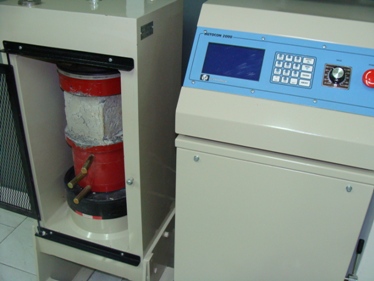Compression testing in concrete specimens
Nowadays reinforced concrete is the most popular building material, as it presents the following main advantages when compared to others:
- It is economical. The materials (water - aggregates - cement) are inexpensive and easily procured. Also, generally maintenance is not required.
- It is workable and manageable. Fresh concrete can be adjusted in any form of formwork and cover practically every architectural requirement.
- It is resistant to mechanical damage and fire.
- It is deal for monolithic constructions (without joints), which as multiply statically indefinite, they have large margins of strength and security, particularly under seismic actions.

So, the laboratory testing of concrete specimens is not only necessary but also very useful, due to the results obtained. In a few words, the laboratory test in which the concrete specimens received, during the concreting (or during the production of concrete) of fresh concrete with suitable patterns, are compressed by an appropriate device ("press"), until their fracture in order to determine their resistance and to draw conclusions about the construction’s strength in general.


